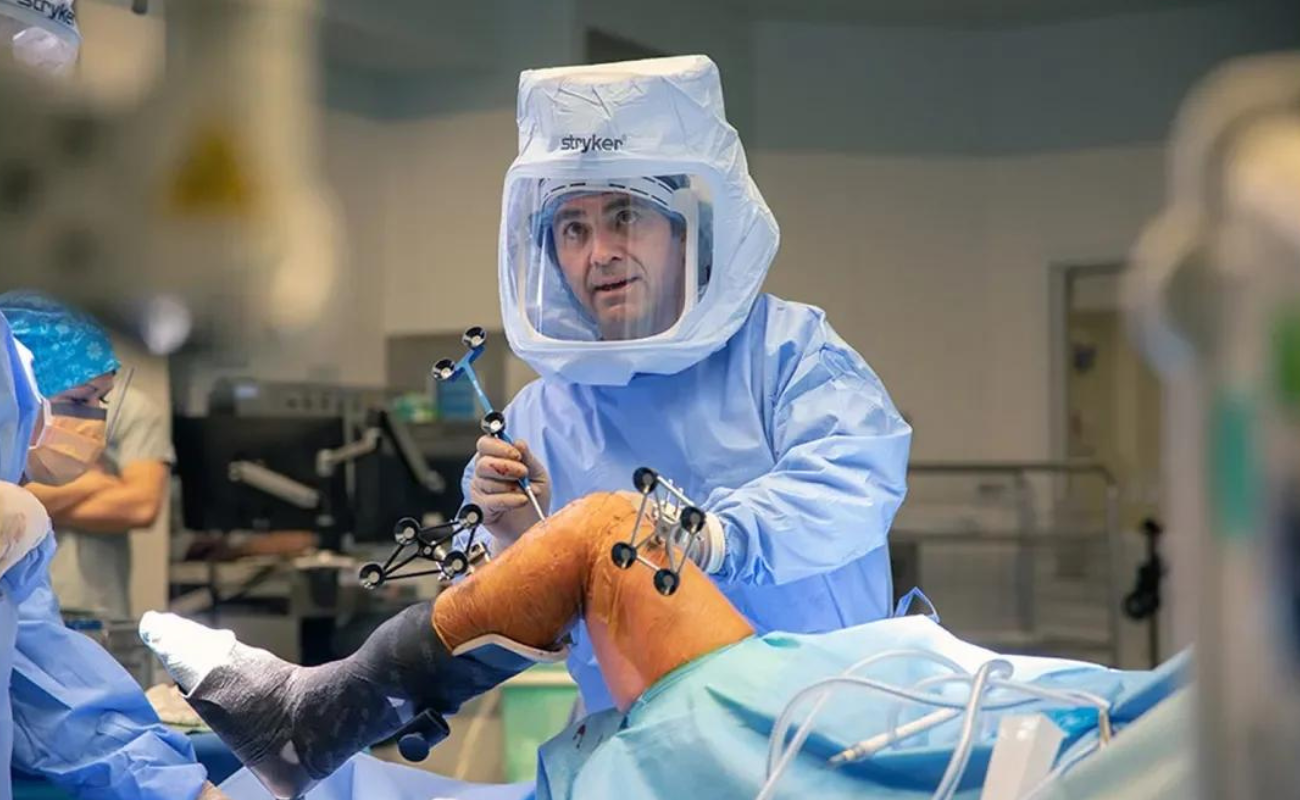Knee Replacement Surgery: A Comparison of Traditional and Robotic Techniques

March 04, 2024
When it comes to addressing debilitating knee pain and restoring mobility, knee replacement surgery has been a transformative solution for many individuals. Over the years, advancements in medical technology have given rise to various approaches in performing knee replacements. In this blog, we will delve into the two primary techniques: traditional knee replacement surgery and the emerging robotic-assisted knee replacement. Understanding the differences between these methods is crucial for patients and healthcare professionals alike, as it can impact the overall success and recovery of the procedure.
Traditional Knee Replacement Surgery
Traditional knee replacement surgery, also known as total knee arthroplasty (TKA), has been a longstanding and effective method for alleviating pain and improving joint function. The procedure involves removing damaged cartilage and bone from the knee joint and replacing it with prosthetic components. Here's an overview of the traditional approach:
1. Preoperative Planning
Before the surgery, the orthopedic surgeon conducts a thorough evaluation of the patient's knee through imaging studies such as X-rays and MRIs. This helps in determining the extent of damage and planning the surgery accordingly.
2. Manual Reshaping
In the operating room, the surgeon manually reshapes the bones of the knee joint to accommodate the prosthetic components. Precise measurements and careful execution are essential for ensuring the proper fit of the implants.
3. Implantation
The prosthetic components, typically made of metal and plastic, are then implanted into the prepared joint space. These components mimic the natural movement of the knee, providing stability and functionality.
4. Rehabilitation
Post-surgery, patients undergo a comprehensive rehabilitation program to regain strength, flexibility, and mobility. Physical therapy plays a crucial role in the recovery process.
While traditional knee replacement surgery has a proven track record of success, there are limitations associated with this method. The manual precision required during surgery may vary among surgeons, potentially leading to variations in outcomes.
Robotic-Assisted Knee Replacement
Robotic-assisted knee replacement is a relatively newer approach that integrates advanced technology into the surgical process. This method aims to enhance precision and optimize outcomes by using robotic systems to assist the surgeon throughout the procedure. Let's explore the key aspects of robotic-assisted knee replacement:
1. Preoperative Planning with 3D Imaging
Robotic-assisted surgery begins with detailed preoperative planning. Using 3D imaging technology, the surgeon creates a virtual model of the patient's knee, allowing for precise mapping of the damaged area and optimal placement of the implants.
2. Surgical Navigation
During the surgery, the robotic system provides real-time feedback and navigation assistance to the surgeon. This ensures accurate execution of the preoperative plan, guiding the surgeon to make precise cuts and adjustments based on the patient's unique anatomy.
3. Customized Implantation
The robotic system assists in customizing the placement of the prosthetic components, tailoring the fit to the individual patient's anatomy. This level of personalization can contribute to improved joint function and longevity of the implants.
4. Postoperative Benefits
Robotic-assisted knee replacement is associated with potential postoperative benefits, including quicker recovery, reduced pain, and improved range of motion. The enhanced precision of the robotic system may contribute to a more natural feel of the replaced knee.
Choosing the Right Approach
Both traditional and robotic-assisted knee replacement surgeries have their merits, and the choice between the two depends on various factors, including the patient's anatomy, the surgeon's expertise, and the available technology. Here are some considerations for patients and healthcare professionals:
1. Patient-Specific Factors
Anatomy: Patients with complex or unique knee anatomy may benefit from the precision offered by robotic-assisted surgery.
Health Status: The overall health and medical history of the patient play a crucial role in determining the most suitable approach.
2. Surgeon Experience and Preference
Expertise: Surgeons with extensive experience in traditional methods may feel confident in their manual skills, while those embracing technology may prefer robotic assistance.
Training: The availability of training and proficiency in robotic surgery influences the surgeon's comfort with adopting this advanced technique.
3. Cost Considerations
Insurance Coverage: The cost of robotic-assisted surgery may be higher, and insurance coverage may vary. Patients should consider their financial situation and insurance policies.
4. Postoperative Expectations
Recovery Time: Robotic-assisted surgery may offer a faster recovery, but individual patient factors also play a significant role.
Long-Term Outcomes: Comparative studies on the long-term outcomes of traditional and robotic-assisted knee replacements can guide decision-making.
Conclusion
In the realm of knee replacement surgery, the choice between traditional and robotic-assisted techniques is not a one-size-fits-all decision. Each approach has its strengths, and the selection should be based on a thorough evaluation of individual factors.
As technology continues to advance, the landscape of orthopedic surgery will likely see further innovations, providing patients with more options and potentially improving overall outcomes. Collaborative discussions between patients and their healthcare teams will be crucial in navigating this ever-evolving field and ensuring the best knee replacement surgeon in Chennai possible outcomes for those seeking relief from debilitating knee pain.
